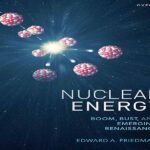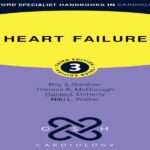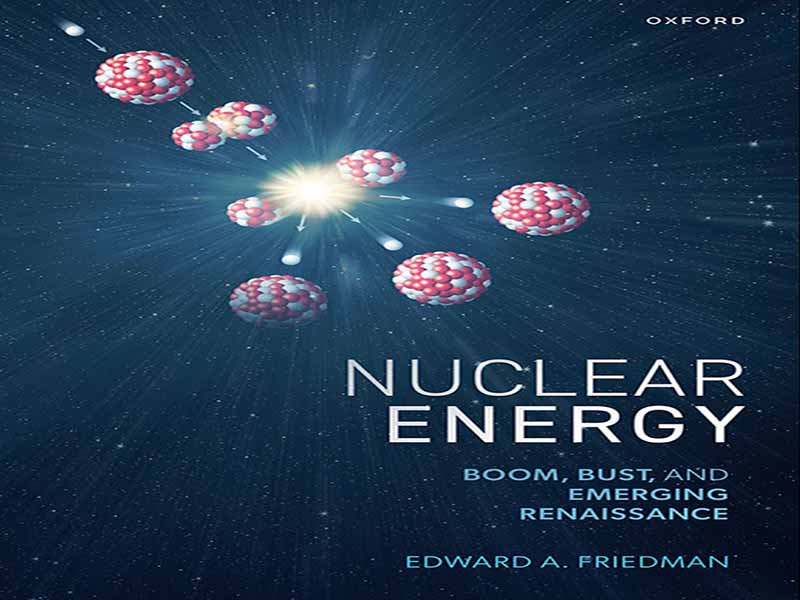- عنوان کتاب: Nuclear Energy Boom, Bust, and Emerging Renaissance
- نویسنده: Edward A. Friedman
- حوزه: انرژی هستهای
- سال انتشار: 2025
- تعداد صفحه: 424
- زبان اصلی: انگلیسی
- نوع فایل: pdf
- حجم فایل: 9.21 مگابایت
این مشاهده توسط جی. رابرت اوپنهایمر در مجموعه سخنرانیهای سال ۱۹۵۳ خود با عنوان «علم و فهم مشترک» چالش بزرگی را برای هر کسی که مایل به انتقال بینشهای کسبشده در دنیای علم و فناوری به عموم مردم است، مشخص کرد. هنگام نوشتن این کتاب، من با این سوال که چه کلماتی باید در این روایت گنجانده شوند و سوال عمیقتر در مورد سطح جزئیات مورد نیاز در ارائه آنها دست و پنجه نرم میکردم. من برای اولین بار به عنوان یک دانشآموز سال آخر دبیرستان با گوش دادن به سخنرانیهای او که از رادیو در منطقه شهری نیویورک پخش میشد، با این کلمات اوپنهایمر مواجه شدم. صدای اوپنهایمر که آن سخنرانیها را ارائه میداد، تمایل من را برای مطالعه فیزیک و شرکت در گفتمان در جامعه بزرگتر در مورد محتوای علم و فناوری تقویت کرد. من به دنبال چنین مطالعاتی در MIT و دانشگاه کلمبیا رفتم و به عنوان استاد فیزیک در موسسه فناوری استیونز در ارتباطات مربوط به علم شرکت کردم. من برای اولین بار در اوایل دهه ۱۹۶۰ با سوالاتی در مورد تأثیر فناوری بر جامعه مدنی مواجه شدم. در آن زمان، من خود را به عنوان یک متخصص موضوعی مطرح کردم که میتوانست در مورد مسائل سیاست عمومی که در سطح محلی و ملی مورد بحث بود، دیدگاهی ارائه دهد. این مسائل شامل پیشنهادهایی برای راکتورهای هستهای در ریونزوود و شورهام و درخواست جان اف کندی از شهروندان برای ساخت پناهگاههای بارش رادیواکتیو در خانههایشان بود. اکنون، ۶۰ سال بعد، دوباره در جستجوی مناسبترین کلمات برای بیان حقایق در مورد راکتورهای هستهای و نقش آنها در جامعه هستم. همراه با انتخاب کلمات مناسب در مورد مسائل هستهای، مسئله میزان جزئیاتی است که باید گنجانده شود تا به خوانندهای که در علوم یا مهندسی آموزش ندیده است، اجازه دهد تصمیمات آگاهانهای بگیرد. شهروندان امروز نمیتوانند از گزینههای پیش روی جامعهای که در معرض تهدید تأثیر بالقوه ویرانگر گرمایش جهانی قرار دارد، فرار کنند. هدف من از نوشتن این کتاب، توانمندسازی مشارکت بخش وسیعی از مردم در این تصمیمگیری است. وظیفه روایت داستان انرژی هستهای امروزه کاملاً متفاوت از دهه ۱۹۶۰ است. در طول سالهای گذشته، شاهد استفاده قابل توجهی از انرژی هستهای به همراه حوادثی بودهایم که تأثیر منفی بر این استفاده داشتهاند. از همه مهمتر، نوآوریهایی وجود داشته است که نوید تحقق راکتورهای فوقالعاده جدید، کارآمد و ایمن را میدهد که اکنون در افق هستند. اما باید به یاد داشته باشیم که این فناوری زمان زیادی میبرد. سالها طول میکشد تا یک طراحی راکتور جدید از مرحله مفهومسازی به مرحله اجرا برسد و پس از عملیاتی شدن، احتمالاً برای سالهای زیادی فعال خواهد بود. راکتورها طوری ساخته میشوند که 40، 60 و 80 سال دوام بیاورند. در نتیجه، از تقریباً 400 راکتور هستهای که امروزه در جهان فعالیت میکنند، اکثریت قابل توجهی از آنها در دهههای 1960 و 1970 طراحی و ساخته شدهاند. از آنجایی که واقعیتهای انرژی هستهای امروز عمیقاً ریشه در گذشته دارد، من تصمیم گرفتهام این موضوع را از منظر تاریخی ارائه دهم. فصل 1 با کشف رادیواکتیویته آغاز میشود، که باعث شد فردریک سودی، شیمیدان انگلیسی، احتمال انرژی هستهای را پیشبینی کند و این بینشها را با دوستش اچ. جی. ولز به اشتراک بگذارد، که در سال 1914 کتاب «جهان آزاد شد» را نوشت که در آن راکتورهای هستهای و سلاحهای هستهای را توصیف میکند. فصل ۱ با اطلاعاتی در مورد کشف شکافت هستهای توسط اتو هان و لیزا مایتنر به پایان میرسد. سپس فصل ۲ به توسعه اولین راکتور و اولین سلاحهای هستهای در پروژه قابل توجه منهتن در جنگ جهانی دوم میپردازد. فصل ۳ به سالهای پس از جنگ میپردازد، زمانی که دریاسالار هایمن ریکوور بر توسعه ناوگان زیردریایی هستهای نظارت داشت و رئیس جمهور دوایت دی. آیزنهاور برنامه اتم برای صلح را معرفی کرد. فصل ۳ با انتقال فناوری هستهای به بخش خصوصی با اولین راکتورهای هستهای غیرنظامی که توسط وستینگهاوس و جنرال الکتریک اجرا شدند، به پایان میرسد. فصلهای بعدی داستان رونق هستهای را که از سال ۱۹۶۰ آغاز شد و تا فاجعه چرنوبیل در سال ۱۹۸۶ ادامه یافت، روایت میکنند. این دوره رشد انرژی هستهای به چندین فصل تقسیم شده است: روایت ایالات متحده در فصل ۴، روایت بریتانیا در فصل ۶، فرانسه در فصل ۷، روسیه در فصل ۸، چین در فصل ۹ و سایر کشورها در فصل ۱۰. در بخش رونق، فصل ۵ گنجانده شده است که به مقاومت در برابر تحولات هستهای میپردازد. از آنجایی که انزجار گسترده، ترس و مقاومت روانی عمیق در برابر مصنوعات هستهای از زمان انفجار هیروشیما در جامعه نفوذ کرده بود، به نظر میرسید بهتر است این پیشگویی در اوایل کتاب مورد بحث قرار گیرد. بخش مربوط به انفجار در فصلهای 11، 12 و 13 کتاب مورد بررسی قرار گرفته است که حوادث جزیره تری مایل، چرنوبیل و فوکوشیما را پوشش میدهد. در حالی که حوادث مورد توجه دیگری نیز وجود دارد، این حوادث بیشترین تأثیر را در تأثیرگذاری بر نگرش عمومی دارند. حادثه مهم وینداسکیل در فصل 6 بررسی شده است و فاجعه کیشتیم در روسیه در فصل 10 گنجانده شده است…
This observation by J. Robert Oppenheimer in his 1953 lecture series “Science and the Common Understanding” identified a major challenge for anyone wishing to communicate insights acquired in the world of science and technology to those residing in the general population. When writing this book, I have been grappling with the question of what words should be included in this narrative and the deeper question regarding the level of detail needed in their presentation. I first encountered these words of Oppenheimer as a high-school senior listening to his lectures that were broadcast on the radio in the New York City metropolitan area. The voice of Oppenheimer, delivering those lectures, reinforced my desire to study physics and to engage in discourse in the larger society about the content of science and technology. I went on to pursue such study at MIT and at Columbia University and to engage in communications about science as a Professor of Physics at Stevens Institute of Technology. I first encountered questions about technology’s impact on civil society in the early 1960s. At that time, I put myself forward as a subject matter expert who could provide perspective on public policy questions that were being debated locally and nationally. These included the proposals for nuclear reactors at Ravenswood and Shoreham and John F. Kennedy’s call for citizens to build fallout shelters in their homes. Now, 60 years later, I find myself again searching for the most appropriate words to communicate facts about nuclear reactors and their role in society. Together with the choice of appropriate words about nuclear issues is the question of the amount of detail to include that will allow a reader untrained in science or engineering to make informed decisions. Citizens today cannot escape from the choices facing a society threatened by the potentially devastating impact of global warming. My goal in writing this book is to empower participation by a broad segment of the public in this decision making. The task of telling the story of nuclear energy today is quite different from what it was in the 1960s. During the intervening years we have seen considerable use of nuclear energy along with accidents that have had a chilling effect on that use. Most notably, there have been innovations that promise the realization of remarkably new, efficient, and safe reactors that are now on the horizon. But we must remember that this is a technology that has long timelines. It takes many years for a new reactor design to move from conceptualization to implementation and once it becomes operative it is likely to be active for many years. Reactors are built to last 40, 60, and 80 years. A consequence is that of the approximately 400 nuclear reactors that are operating in the world today, a considerable majority of them were designed and built in the 1960s and 1970s. Since the realities of nuclear energy today are deeply rooted in the past, I have chosen to present this subject from an historical perspective. Chapter 1 starts with the discovery of radioactivity, which led English chemist Frederick Soddy to predict the possibility of nuclear energy and share these insights with his friend H. G. Wells who, in 1914, wrote The World Set Free, in which he describes nuclear reactors and nuclear weapons. Chapter 1 concludes with information about the discovery of nuclear fission by Otto Hahn and Lisa Meitner. Chapter 2 then discusses the development of the first reactor and the first nuclear weapons in the remarkable Manhattan Project of the Second World War. Chapter 3 deals with the post-war years when Admiral Hyman Rickover oversaw the development of a nuclearpowered submarine fleet and President Dwight D. Eisenhower introduced the Atoms for Peace program. Chapter 3 concludes with the transfer of nuclear technology to the private sector with the first civilian nuclear reactors implemented by Westinghouse and General Electric. Subsequent chapters tell the story of the nuclear boom that began in 1960 and continued until the disaster at Chernobyl in 1986. This period of growth of nuclear energy is divided into multiple chapters: the US account in Chapter 4, the UK account in Chapter 6, France in Chapter 7, Russia in Chapter 8, China in Chapter 9, and other countries in Chapter 10. Embedded in the boom section is Chapter 5, which deals with resistance to nuclear developments. Since widespread antipathy, fear, and deep psychological resistance to nuclear artifacts permeated society from the time of the Hiroshima detonation, it seemed best to discuss this foreboding early on in the book. The bust part of the book is addressed in Chapters 11, 12, and 13, which cover the accidents at Three Mile Island, Chernobyl, and Fukushima. While there are other accidents of interest, these are the most consequential in influencing public attitudes. The important Windscale accident is dealt with in Chapter 6, and the Kyshtym disaster in Russia is included in Chapter 12. The point of view of this book is that it is vital that carbon emissions be reduced in the most expeditious manner and that that will necessarily include power generated by wind, solar, and nuclear methods. To help the reader evaluate these choices, a brief review of wind and solar power and batteries is included in Chapter 14 The accidents, particularly the Chernobyl event, precipitated a hiatus in reactor construction worldwide. During this hiatus, the need for fail-safe reactors was brought into focus, resulting in designs for Generation-III and Generation-IV reactors and giving rise to the beginnings of a nuclear renaissance. The renaissance section of the book starts with Chapter 15, which reviews Generation-III reactors. These reactors have various improved features compared with earlier models, with the key characteristic that in the first 72 hours following an accident the system avoids serious consequences without activation of technology or human intervention. The design of these systems employs the law of physics to control accidents. Chapter 16 then reviews three distinct topics—fuel, waste, and radiation—and does so in the context of advanced Generation-III and Generation-IV reactor designs. Generation-IV designs are introduced in Chapter 17. I identify the beginning of the renaissance period for nuclear energy as the period around 2000 when an international initiative began an organized quest for developing fail-safe reactors identified as Generation IV. The following four chapters (18, 19, 20, and 21) describe the four most promising Generation-IV designs: molten salt reactors, liquid sodium reactors, liquid lead reactors, and high-temperature gascooled reactors. Chapter 21 also discusses the use of high-temperature reactors for the direct use of heat in industrial applications, such as the processing of metals. Greenhouse gas production from this sector of the US economy accounts for more than 20% of total greenhouse emissions. These high-temperature applications cannot easily be addressed by wind and solar generators, which have difficulty reaching the high temperatures that are needed. Hence, the use of nuclear energy for this application is essential. A significant energy need exists in Arctic regions as well as in island locations where floating nuclear reactors can be employed. This specialized application is the subject of Chapter 22. The dominant thrust for nuclear reactor technology currently is devoted to the production of small modular reactors that generate up to 300 MW electric and can be built in factories. This pursuit, which encompasses the development of more than forty new designs, is the subject of Chapter 23. Chapter 24 provides an overview of the nuclear reactor export market, which is stimulating initiatives in several countries and is needed to meet the energy needs of countries that do not manufacture nuclear reactors. Finally, Chapter 25 provides a summary of current programs to meet the world’s energy needs and carbon emission challenges. These initiatives need to address not only technological issues, but also financial, regulatory, and political concerns as well. Of overriding significance is Oppenheimer’s concern for the ways in which words like waste, nuclear, and radiation are perceived.
این کتاب را میتوانید از لینک زیر بصورت رایگان دانلود کنید:
Download: Nuclear Energy Boom, Bust, and Emerging Renaissance



































نظرات کاربران